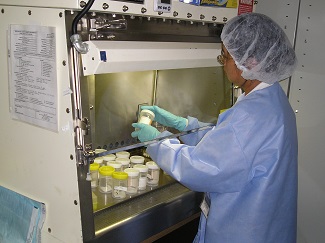Difficult Times Call for Creative Solutions: Biosurgery
June 4, 2020
Challenges are nothing new for those of us who work in health care. Every day, we triumph over difficult situations. Yet, the current coronavirus outbreak has complicated even the simplest of procedures and has brought us additional challenges:
- As a result of social distancing, how do we attend to our patients’ needs without physically seeing them, touching them, smelling them?
- How do we provide medications, devices, and services when so many of these are in short supply and when so many patients cannot afford them because they have lost their work-sponsored medical insurance?
- How do we provide service when our own staffing is reduced, either because of illness or because of reassignments to the coronavirus disease 2019 (COVID-19) front?
The Problem with "Elective" Debridement
Many facilities are reducing or eliminating outpatient visits, “elective” debridement, etc. However, a necrotic, infected wound is not something we can simply put “on hold.” We have many advanced wound care tools and products at our fingertips, but many of those tools require our fingertips to apply and/or manage them. This is particularly the case when it comes to aggressive (for example, sharp or hydrosurgical) debridement. Because of the risks associated with aggressive debridement (i.e., bleeding, infection, loss of viable and maybe even critical tissue), aggressive debridement is generally left to trained and experienced professionals (and even many trained and experienced wound care professionals are not permitted to use some of these modalities).
With the current COVID-19 pandemic and the closure of many of our wound care clinics, many patients with potentially limb-threatening wounds are choosing, or being forced, to “wait it out” as they try debridement modalities that are slow, if effective at all. Too many therapists are settling for enzymatic or autolytic debridement (or wet-to-dry gauze!) when we know that our patients would be best served with aggressive and prompt debridement.
Telemedicine is bringing us—our eyes and ears and minds—to our patients. However, it is not bringing our hands to the bedside. Home health care, or detailed education for the patients and their family, can be our hands, the physical manifestation of our efforts to heal their wounds. However, can patients, family members, or even home health care nurses provide the same level of debridement that the patient could have received in the clinic? Possibly not, but then again, we can come close. And we MUST get as close as possible, for the patients’ sake. Here is what I and some of my colleagues have been doing, when conventional surgery is not an option: biosurgery.
How Biosurgery Can Help
Biosurgery (maggot therapy) can address multiple needs during the coronavirus epidemic: maggot therapy can reduce patient visits, decrease the time burden on health care professionals, and provide low-cost therapy at a time when many patients are losing their jobs and their medical insurance. Maggot therapy can provide rapid and selective debridement without expending the resources of a busy surgeon or nurse who has sharp debridement privileges.
If you have never tried maggot therapy, this is a good time to consider it. There are plenty of videos and instructional resources on the Internet, and the BioTherapeutics, Education & Research (BTER) Foundation regularly provides personal assistance and group classes (sorry, all in-person courses are currently on hold). Many patients are quite willing to apply (or at least remove) the dressings themselves, thus further reducing the burden on trained health care providers. With complete debridement often achievable with just a single two-day course of treatment, limited access to follow-up care need not be a major concern. Regarding cost, a vial of medicinal larvae (enough to treat a 40–80 cm2 wound) costs about the same as a single tube of collagenase.
If your patient does not have the financial resources or insurance to pay for the maggots, you should be comforted to know that the BTER Foundation provides Patient Assistance Grants to cover the cost. So, although COVID-19 is complicating our professional lives, our personal lives, our financial lives, and our social lives, wound care therapists can at least share some of our workload with an eager team of wound-cleaning “professionals”—microsurgeons that will work tirelessly day and night without supervision, at low cost. If your patients need debridement and you cannot debride their wounds yourself, then this is the time for maggot therapy. Not even severe acute respiratory syndrome coronavirus 2 (SARS-CoV-2) stands in your way.
Suggested Reading
Asociación Mexicana para el Cuidado Integral y Cicatrización de Heridas. Clinical practice guideline for the treatment of acute and chronic wounds with maggot debridement therapy. 2010. https://s3.amazonaws.com/aawc-new/memberclicks/GPC_larvatherapy.pdf. Accessed May 10, 2020.
Lin G, Lavon H, Gelfond R, Abargel A, Merin O. Hard times call for creative solutions: medical improvisations at the Israel Defense Forces Field Hospital in Haiti. Am J Disaster Med. 2010;5(3):188-192.
Mirabzadeh A, Ladani MJ, Imani B, Rosen SA, Sherman RA. Maggot therapy for wound care in Iran: a case series of the first 28 patients. J Wound Care. 2017;26(3):137-143. doi: 10.12968/jowc.2017.26.3.137.
Sherman RA. Maggot therapy takes us back to the future of wound care: new and improved maggot therapy for the 21st century. J Diabetes Sci Technol. 2009;3(2):336-344.
Sherman RA. Maggot therapy for treating diabetic foot ulcers unresponsive to conventional therapy. Diabetes Care. 2003;26(2):446-451. Sherman RA. Maggot versus conservative debridement therapy for the treatment of pressure ulcers. Wound Repair Regen. 2002;10(4):208-214.
Sherman RA, Hetzler MR. Maggot therapy for wound care in austere environments. J Spec Oper Med. 2017;17(2):154-162.
Sherman RA, Wyle F, Vulpe M. Maggot therapy for treating pressure ulcers in spinal cord injury patients. J Spinal Cord Med. 1995;18(2):71-74.
Wayman J, Nirojogi V, Walker A, Sowinski A, Walker MA. The cost effectiveness of larval therapy in venous ulcers. J Tissue Viability. 2000;10(3):91-94. Erratum in: J Tissue Viability. 2001;11(1):51.
About the Author
Ronald Sherman retired from the University of California in 2008 to pursue his interests in teaching, research, and patient care. He is currently the Director of the Biotherapeutics, Education & Research Foundation, whose mission is to advance health care through education and research in biotherapy. He is also the Co-Founder and Laboratory Director of Monarch Labs, once again the sole supplier of medicinal maggots in North America. To minimize conflicts of interest, Dr. Sherman no longer provides wound care; instead he earns his living as a part-time HIV/STD physician for the Orange County Health Care Agency (health department).
The views and opinions expressed in this blog are solely those of the author, and do not represent the views of WoundSource, HMP Global, its affiliates, or subsidiary companies.













Follow WoundSource
Tweets by WoundSource